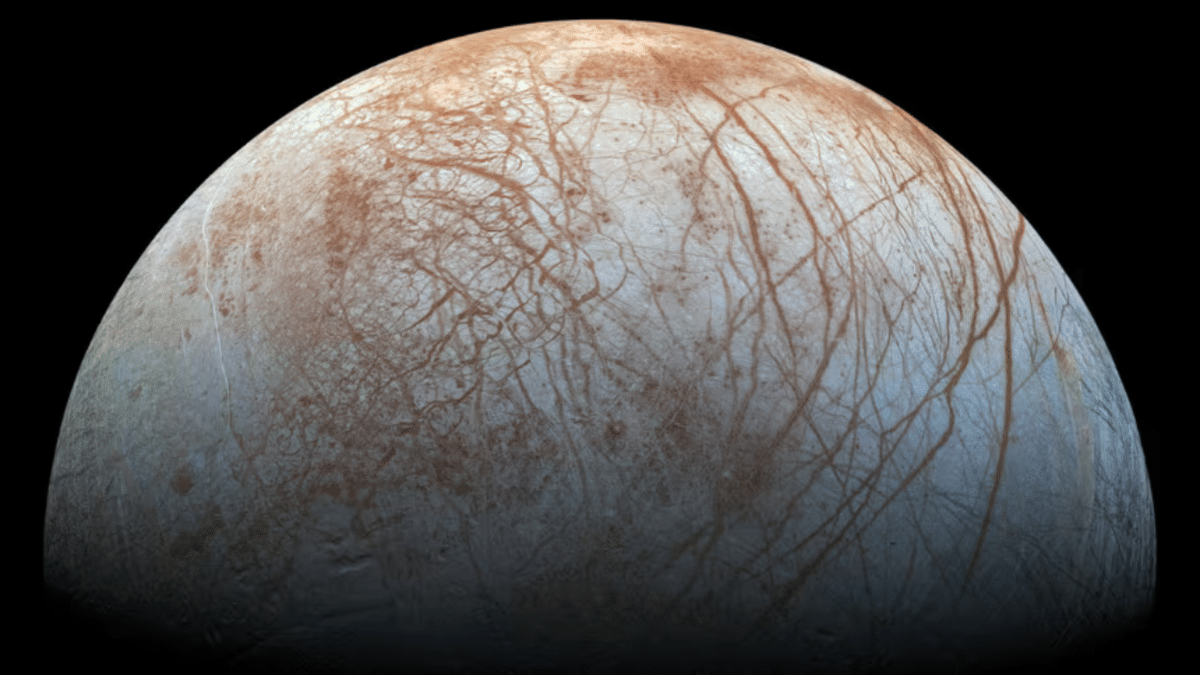Recent photographs from NASA’s Juno spacecraft have unveiled an astonishing secret beneath Jupiter’s moon, Europa’s icy crust.
Europa, one of Jupiter’s many moons, has always piqued scientific curiosity. With a magnetic field, a fragile oxygen atmosphere, and a liquid iron core, Europa is more planet-like than moon-like. Its 11-mile-thick icy crust covers a vast ocean, which recent images from Juno have confirmed can bubble up through the ice.
Since arriving at Jupiter in 2016, Juno has been the first orbiter to closely explore Europa. On May 19, 2024, it captured the first high-resolution images of the moon since NASA’s Galileo spacecraft’s flyby in 2000. These groundbreaking images revealed that the north and south poles of Europa have free-floating ice crusts.
In a captivating twist, a particular area on Europa’s surface, nicknamed ‘the Platypus’ by scientists, was revealed. This region, featuring hummocks, ice blocks, and ridges, bears a resemblance to the shape of a platypus. Scientists believe this area might allow deposits of saltwater to reach the surface from Europa’s ocean.
According to NASA, ‘the Platypus’ could be a crucial site for searching for life beyond Earth. Steve Levin, project scientist for Juno at NASA’s Jet Propulsion Lab, mentioned, “That could give us the chance to study the composition of the saltwater that lies underneath the ice. People are really excited about looking for life in that ocean on Europa. It might be bacteria or the equivalent, but any life at all not found on Earth would be a big deal, right? It would be the first time we’ve ever found life anywhere else.”
While Juno’s mission ends in 2025, the hunt for life on Europa continues with two more missions. NASA’s Europa Clipper is set to launch later this year and will arrive in 2030. The European Space Agency’s Juice (Jupiter Icy Moons Explorer), launched last year, will explore Europa, Ganymede, and Callisto when it arrives in 2031.
Europa’s mysterious ‘Platypus’ region might hold the key to discovering extraterrestrial life. With upcoming missions promising more insights, the excitement around this icy moon is palpable.

